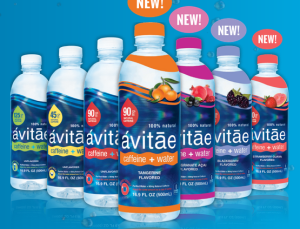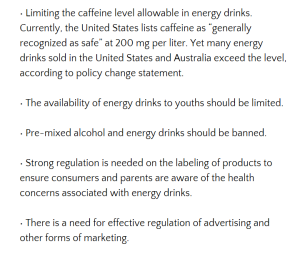For this edition of Food Science
in the News, we look at one example where the fresh/natural fixation is
creating food waste, and one example where the super-fruit fixation is
reducing it.
There’s a delicate balance between wanting to reduce food waste, and
wanting fresh, whole food. How do you keep food in acceptable condition
when artificial ingredients are frowned upon, and even the oldest, most
basic preservative (plain ol’ table salt) is on many Diet-Don’t lists?
First, a food waste primer
- Approximately 40% of the annual food supply in the US becomes food
waste, according to the Natural Resources Defense Council (NRDC) [1]
- The US Department of Agriculture defines food waste as “the edible
amount of food, post-harvest, that is available for human consumption
but is not consumed for any reason”; this includes losses that occur due
to spoilage, plate waste by consumers, food discarded by retailers for
not meeting color/appearance standards, and even the natural losses from
cooking (think of the food on the sides of the pot or mixing bowl) [2]
- The top three food groups in terms of food loss at the retail and
consumer level are dairy products, vegetables, and grain products [3]
 |
| Sweet Potato Skins - common example of food waste |
 |
| Another example of food waste, unless you lick the bowl clean... |
When innovation leads to MORE food waste
The consumer has a louder voice now than during any time in history.
Thanks to factors such as (but not limited to) social media, food
bloggers, food trucks, and the uptick in online supplement sales,
consumers have more choices, and more power. With this power, one fad or
concern becomes a business mandate faster than you can say, “General
Mills Gluten Free Cheerios”. Not all of the consumer-driven formulation
changes are bad or scientifically-unfounded, but every re-formulation
brings consequences.
Case-in-Point: Nestle and Hershey move toward simpler ingredients (and shorter shelf life)
Hershey Co and Nestle USA have announced plans to transition to ingredients that are easier to understand, according to
Food Business News.
While this plays into one of the trends that vexes me most, the “Don’t
eat it if you can’t pronounce it” trend, I respect both companies for
trying to make their confections better. Like many consumers , I try to
limit the amount of artificial ingredients I put in my body. HOWEVER,
like many food scientists, I’ve struggled with the challenge of
developing an “artificial-ingredient free” product that lasts long
enough to make it through the supply-chain to the consumer. Unlike
chocolate candy bars, my product does not fly off the shelves [Read:
Why Greenberry Shakeology is like Neville Longbottom].
By the time the consumer has received his or her order, half of the
product’s one-year shelf life is gone. Since we only use natural
flavors, there are times the flavor itself is half-way through its own
one-year shelf-life before it’s even arrived at our manufacturing plant
(though some flavor houses are over-cautious with their shelf-life
claims). As a result, by committing to non-artificial ingredients and by
relying on vitamins and salt alone to preserve our finished product, we
run the risk that the consumer returns or tosses the product because
it’s past at its optimal taste window. Of course, we evaluate this risk
carefully through shelf-life and stability studies (
as detailed here), but even due-diligence can’t completely remove all risk.
With their promises to remove
artificial flavors and colors, Nestle USA and Hershey are going to face
these same hurdles. In fact the challenges they face with their
non-artificial commitments may be even worse since chocolate is so
sensitive to temperature abuse during shipping and handling. The average
consumer sees the white spots of chocolate bloom as mold, and won’t
think twice before tossing the product. With other food companies making
similar simple-ingredient pledges, I worry about the effects of these
reformulations on the food waste dilemma.
When innovation leads to LESS food waste
Three areas of Food Waste Reduction innovation are (1) reducing waste
before it occurs, (2) recovering food that would become waste, and (3)
recycling/re-purposing food waste.
The first and second approaches seem the most feasible, as demonstrated by Buzzfeed’s article, “
34 Ways to Waste Less Food”. Additionally, apps like
StillTasty and
FoodKeeper
aim to provide guidance on when a food is past the point of being
edible, and help consumers use food strategically before it spoils. Yet
perhaps the greatest opportunities lie with approach number three: with
the increasing focus on “clean label friendly” ingredients, food
science research is exploring ways to re-purpose food waste.
Case-in-Point: A new destiny for mango seeds
Mango seeds are a by-product of mango harvesting, and are generally
considered agroindustrial waste. However, mango seeds are a potential
replacement for cocoa butter, according to a study published in the
Journal of Agricultural and Food Chemistry (and translated into plain English in
Confectionery News).
This replacement offers several benefits. First of all, cocoa butter is
used in both chocolate and pharmaceutical applications, but it’s
expensive. Mango seeds are an inexpensive source since they’re normally
discarded. Finally, mango butter and cocoa butter have similar fatty
acid profiles, and have comparable properties in an emulsion gel form,
according to this study. (Plus, every one can pronounce “mango butter”!)
BOTTOM LINE
There is nothing wrong with
striving to limit consumption of artificial ingredients, and it’s
encouraging when food companies pay attention to their consumers’
interests and appetites. But there are consequences to every action, and
as a food scientist I would like to see more food companies approaching
this issue with honesty, not chemophobia. I would like to see food
companies stand up and say, “We hear you, but in this case we can’t stop
using ingredient X because…”
Embrace the science.
– – –
Green-Eyed Guide
References Cited:
[1] NRDC. 2012. Wasted: How America is losing up to 40 percent of its
food from farm to fork to landfill. Natural Resources Defense Council
Issue Paper, IP:12-06-B. (
READ THE WHOLE PAPER FOR FREE)
[2] Golan, E., Buzby, J.C. 2015. Innovating to Meet the Challenges of Food Waste. Food Technology 69(1) January: 20-25.
[3] Buzby, J.C., Wells, H.F. and Hyman, J. 2014. The estimated
amount, value, and calories of postharvest food losses at the retail and
consumer levels in the United States. EIB-121, Feb. Economic Research
Service, U.S. Dept. of Agriculture.
Additional Resources and Recommended Reading:
Food Waste – A Story of Excess (YouTube – Visually)
FoodKeeper App Watch-outs: USDA FoodKeeper app intended to fight food waste, but it may just cause confusion
http://www.mnn.com/food/healthy-eating/blogs/usda-foodkeeper-app-intended-to-fight-food-waste-but-it-may-just-cause#ixzz3Xv4xIqg0






